22+ Sample Horse Lease Agreement
-
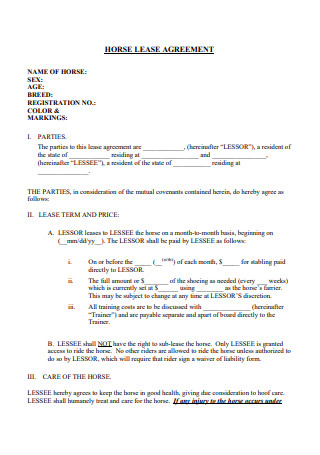
horse lease agreement
download now -
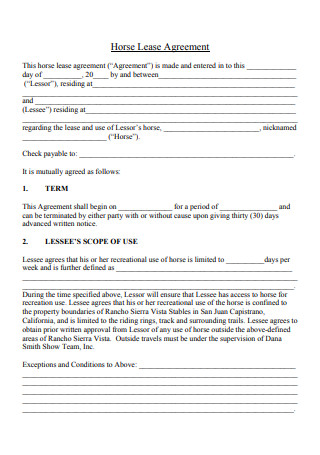
Sample Horse Lease Agreement
download now -
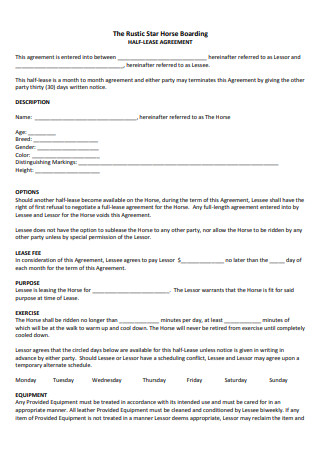
Horse Boarding Half Lease Agreement
download now -
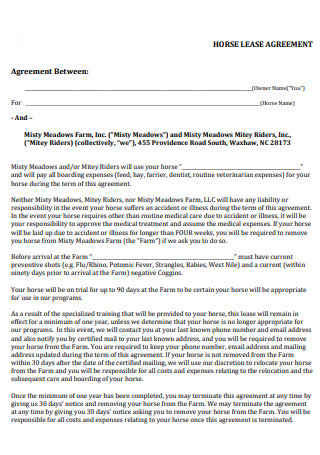
Basic Horse Lease Agreement
download now -
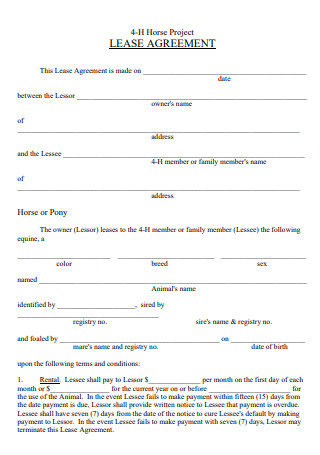
Horse Project Lease Agreement
download now -
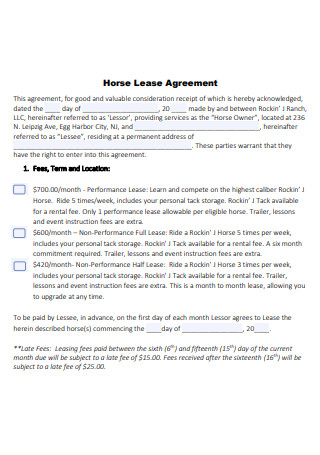
Horse Lease Agreement Example
download now -
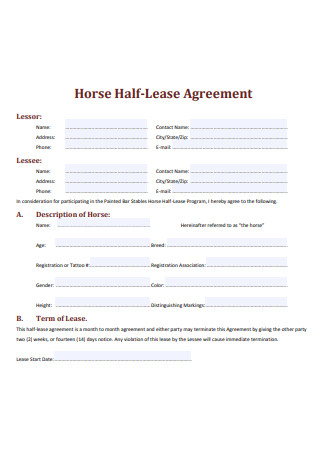
Horse Half Lease Agreement
download now -
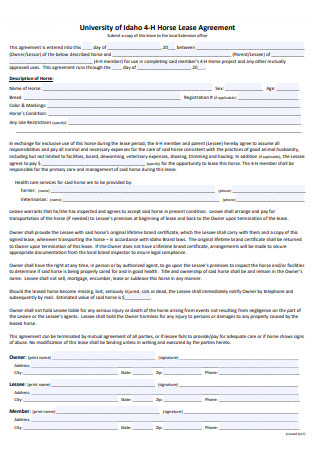
Formal Horse Lease Agreement
download now -
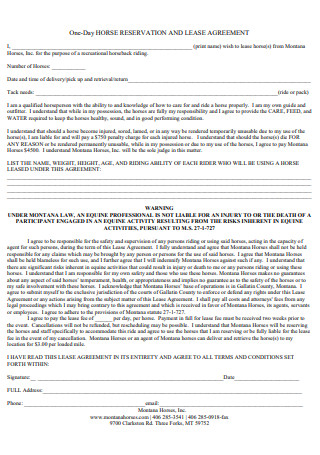
Horse Reservation Lease Agreement
download now -
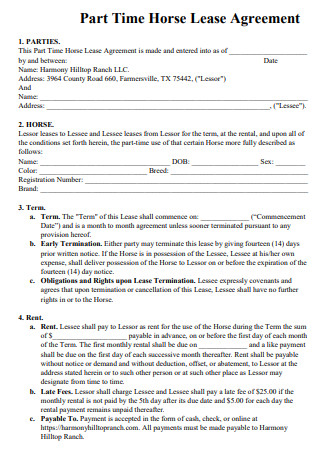
Part Time Horse Lease Agreement
download now -
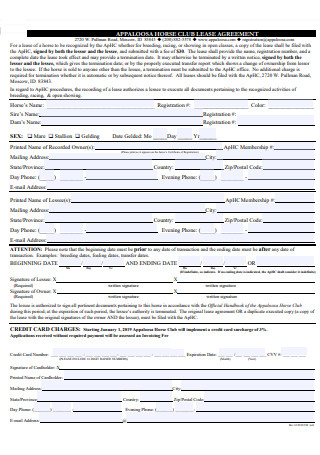
Horse Club Lease Agreement
download now -
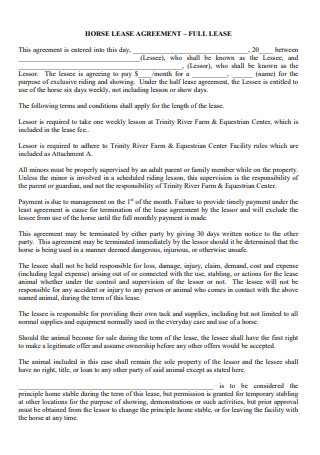
Horse Full Lease Agreement
download now -
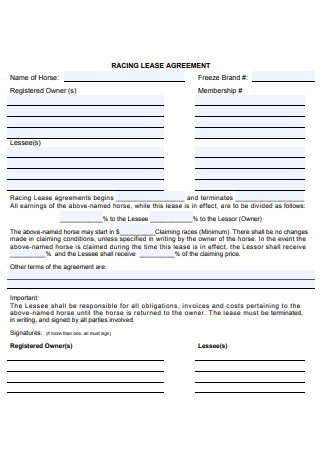
Horse Racing Lease Agreement
download now -

Horse and Pony Lease Agreement
download now -
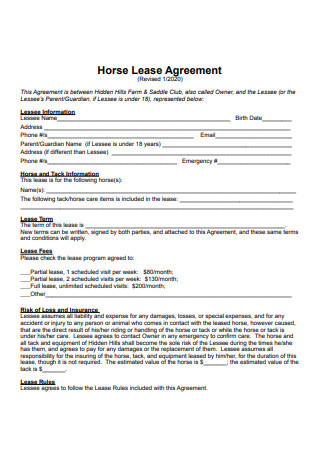
Standard Horse Lease Agreement
download now -
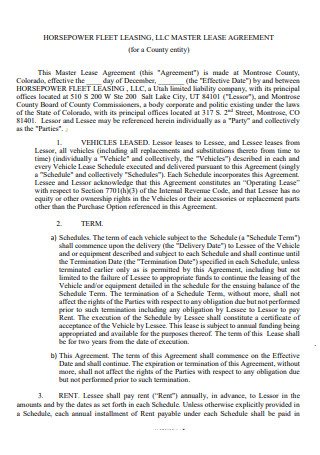
Horse Master Lease Agreement
download now -
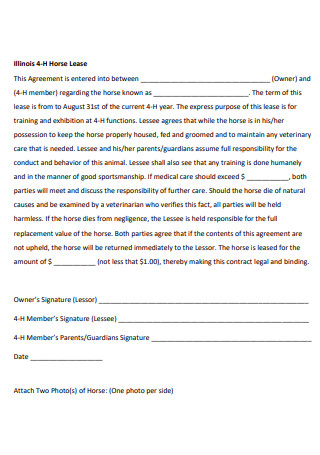
Horse Lease Agreement in PDF
download now -
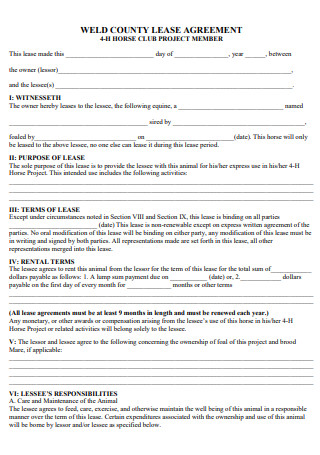
Horse Club Project Member Lease Agreement
download now -
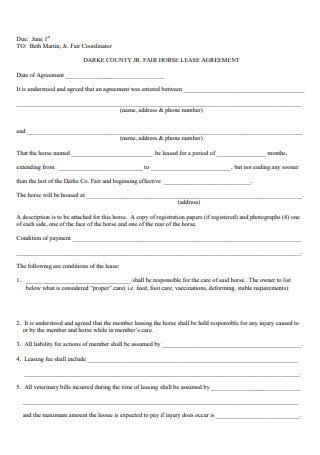
Fair Horse Lease Agreement
download now -
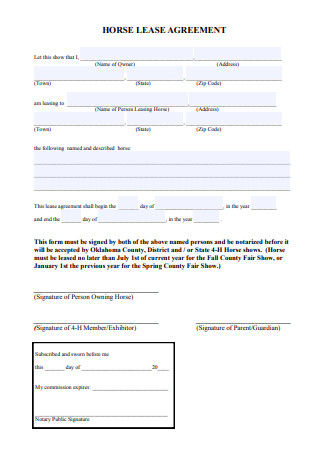
Simple Horse Lease Agreement
download now -
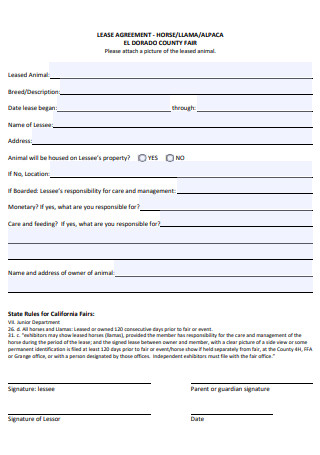
Printable Horse Lease Agreement
download now -
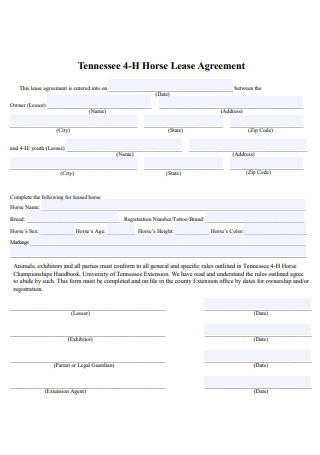
Horse Lease Agreement Format
download now -
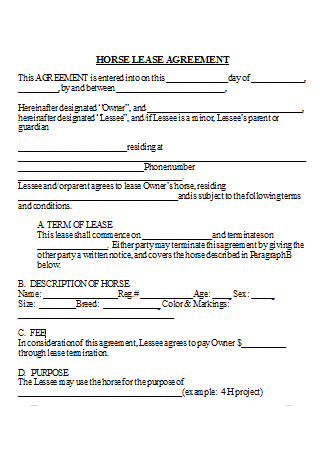
Horse Lease Agreement in DOC
download now
FREE Horse Lease Agreement s to Download
22+ Sample Horse Lease Agreement
What Is a Horse Lease Agreement?
Common Terms Used In a Horse Lease Agreement
How To Create a Horse Lease Agreement
FAQS
Is It Better to Buy or Lease a Horse?
What Is a Horse Tack?
What Does Indemnification Means In a Horse Lease Agreement?
What Is a Horse Lease Agreement?
A horse lease agreement, like any other rental lease agreement, is a contract between the lessee and lessor that allows the lessee to borrow a specified breed of horse for a specific purpose for a set period of time. It will include information about the financial and agreed-upon payment contract, horse maintenance, and the location where the lessee is permitted to utilize the horse. It could be used for a variety of purposes, such as equestrian sports training or lessons, or it could be utilized merely for entertainment or for film production. It would be an agreement in which both parties consented to its usage and purpose by utilizing a printable horse lease agreement template.
Some horse owners do not use their horses as much as they should and want the animal to get the workout it need; thus, horse leasing is a preferable option. It’s also possible that someone is interested in horses but does not want to buy one because they are pricey and only used for a limited period of time. According to peetkeen.com’s article on “Basics of Leasing a Horse”, the cost for a full lease would be approximately 25% -30% of a horse’s annual financial value. That is, if the horse’s annual value is $15,000, the lease charge might be as high as $4,500.
Common Terms Used In a Horse Lease Agreement
A horse lease agreement may have varying restrictions depending on its uses and what the owner can offer. So, before you lease, look into what would be the optimal choice for your predicament.
How To Create a Horse Lease Agreement
So, you want to rent a horse or maybe you want to learn how to ride a horse? Nonetheless, here is what your horse lease agreement template should have, or if you want to lease, here is the information you should be prepared to fill out and give:
1.Lesse’s and Lessor’s Information
If you want to lease a horse, the information on both sides is only the bare minimum. Because it is an agreement, all relevant facts such as names, ages, addresses, and dates should be filled out to ensure the legitimacy on both sides when the agreement is signed. Both may be required to present the requisite documentation to prove their identification. It will inform the lessor as to who he is granting access to his horse. Are they trustworthy? Or maybe they’re just suspicious people? This ensures that the owner says exactly who he is to the lessee. Again, on the lessor’s side, perhaps they are in the horse leasing industry; names limit it down when it comes to reviewing agreements.
2.Horse information.
Of course, if you are interested in leasing a horse, you should inspect its condition and suitability for your purposes. Different horse breeds will be used for various functions, and age may also be a factor. For example, there are certain breeds that specialists may consider to be the breed most suited for sports. Because these horse breeds differ in terms of jumping ability, movement, and conformation, their appropriateness for the sport is determined by these factors. Horses may also be bred particularly for a specific application; this is most usually done with racehorses where betting may occur. But, if you’re looking for a horse for your first riding lesson, you won’t need a sports horse, will you? In addition, in the horse information section, the details, particularly minute distinctions and distinctive qualities of the horse, will be noted. This ensures that the lessee is using the precise horse that they requested.
3.Uses and Care for The Horse
As previously said, it should be defined for what you intend to use the horse for. It should also be noted if the horse requires any special medical attention or care as a result of its use. Because the owner will not be watching every time it will be used, especially if it is outside, they will be at ease knowing exactly what they agreed to. It is best to come to an agreement on who can ride the horse and what specific uses are exclusively allowed. And certain horses may not be suitable for a particular application, which would be detrimental to the horse’s and rider’s health and safety. As a matter of fact, you should not lie about this. Of course, the owners will only allow their horse to be leased if they are confident that it is docile enough to be ridden by a random stranger. Creating a preventive action plan, on the other hand, informs the lessee of what to do if something happens to the horse. It is also very different if you sign an equine lease agreement but do not fully utilize the horse considering they require the regular mobility and activity that is required from strenuous sporting activities. This is precisely what they are bred for. Concerning its care, it should be determined who will be responsible for ensuring that the horse receives regular veterinarian care as well as paying for it.
4.Owner’s Access
This is something that should be thoroughly addressed and incorporated in the written agreement. If the owner like to visit their horses and see them on a regular basis, this should be communicated to the lessee, as it may make the lessee uncomfortable receiving a visit from the owner every time. It would feel as if something was hovering over them, observing them like a hawk. And if the owner wishes to personally monitor a medical condition, they may visit frequently too. This is especially true in full lease agreements, because the owner is essentially handing over complete ownership to the lessee, and the lessee may not want the owner to ride or visit the horse throughout the length of the lease.
5.Equipment
Horses can be picky about what they have in their bodies if they are used to something and are uneasy with a new piece of equipment, especially if the lessee chooses to use their own riding gear items, such as saddles or stirrups. Perhaps the owner will lend some parts as part of an arrangement, and what is included should be mentioned before anyone uses it. Because any lost or damaged gear during equipment inspection can be seen, and if it was not documented, the lessor would be at a disadvantage. An agreement that is only based on word of mouth can only lead to issues that could have been avoided if there was a written agreement in place.
6. Lease Term, Return and Payment
Now we’ll move on to the lower section. The beginning and ending dates of the lease should be indicated in the lease term agreement. Determining how long the user wishes to lease the horse for may necessitate long-term care. Because lease lengths might range from a month to years, the charges, and responsibilities that a lessee must assume can vary. Nobody wants to be startled by a huge billing invoice owing to an undefined lease period, and its ambiguity would be a risk for the owner too. It should also be indicated what payment options are available to the lessee. Is there a down payment required? Is it going to be a monthly fee? Is it required that they pay in full? Is it possible for them to pay on credit? It is important to have this in writing so that all parties are on the same page when it comes to paying. Additional charges should be indicated, especially when it comes to the cost of various sorts of horse care and who will bear that duty. The most important question is when the horse will be returned and what the repercussions will be for the lessor if it is not returned in good condition. It should be agreed upon what the lessee’s responsibilities are in the event of an injury occurring during the lease term. Also, if it is returned early, would a refund be issued? Will the owner provide a refund receipt? Is there any reimbursement from the owner’s end? So, this is what you should pay special attention to in the terms of your agreement, and it should be as straightforward as possible.
FAQS
Is It Better to Buy or Lease a Horse?
Purchasing a horse entails a plethora of obligations. Most notably in terms of its care. Dental care, vaccinations, grooming, veterinary care, and its housing and food are examples of medical expenses. That maintenance may put a hardship on someone who is not prepared to pay the long-term cost. However, leasing, particularly full lease, would provide you with the accessibility and flexibility you require without needing you to deal with its upkeep. Which, once again, is dependent on your agreement. Conversely, leasing allows you to return it if you ever wish to relieve yourself of the responsibility of caring for a horse. So, obviously, there are numerous advantages to leasing a horse. However, if you own it, you will never have to return it and will be able to use it whenever and wherever you want. If it is the convenience you seek, consider the cost of maintenance and the responsibility of caring for it before choosing whether it is worthwhile to purchase.
What Is a Horse Tack?
A horse tack is the equipment and gear that is attached to a horse before it is ridden. The following are common components of horse tack: saddles, which is the seat used on top of a horse; stirrups, which is the section used to step on in order to get on the back of the horse and supports the rider’s feet; and the girth, which is the strap that maintains the saddle in place. Reins, a leather rope that runs from the bit in a horse’s mouth towards the rider’s hand, aids in navigating and controlling the horse’s path; halters, a collar fastened around the horse’s head that allows it to be tied.
What Does Indemnification Means In a Horse Lease Agreement?
In a horse lease agreement, indemnification is the section in which the lessee assumes all financial responsibility or liability produced by the horse. During a riding session, for example, if the horse caused damage to any sections of the area that may or may not belong to the lessor, the lessee would be responsible for the costs of repairing the damage.
Riding a horse would be the epitome of riding in style. And, while you can just discover a wild horse and use it for your own purposes, which may be challenging nowadays, there is also the part where you must tame them yourself. Such that, leasing an already submissive horse for your usage, whatever that may be, may be a preferable alternative. And here at Sample.Net, you can find free lease horse agreements templates and downloadable lease horse agreements pdf as a start!
